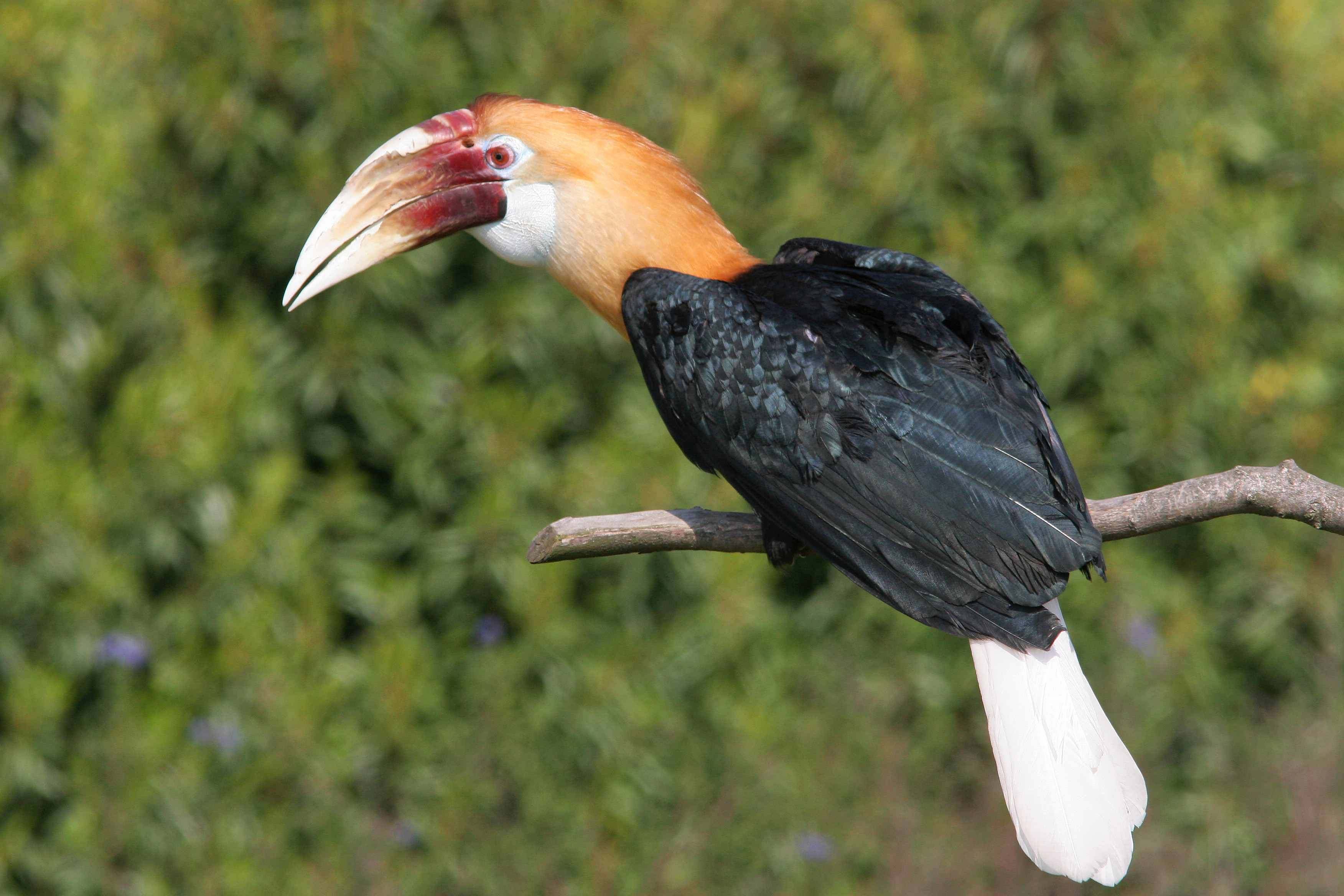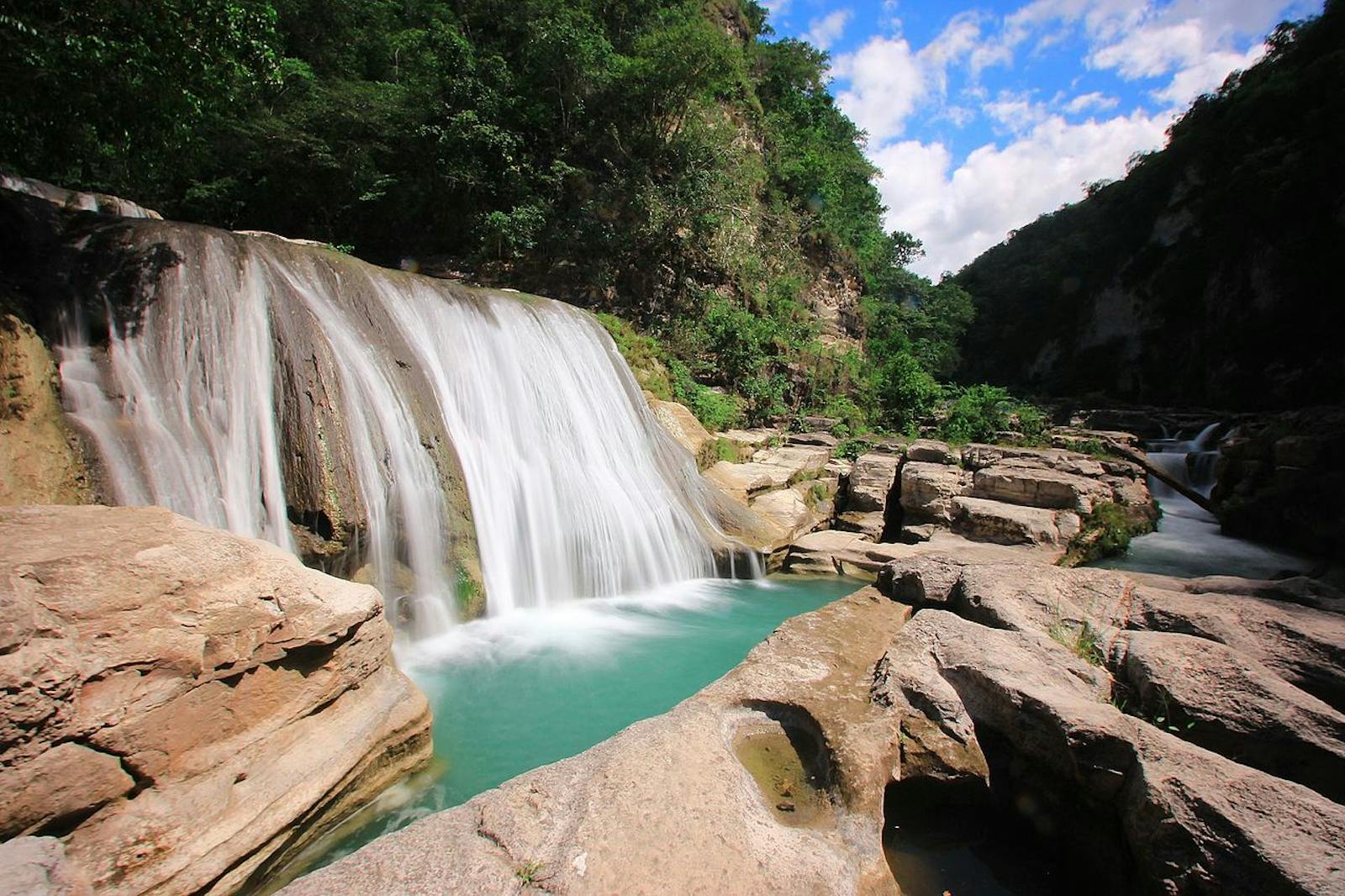Sumba Deciduous Forests
The ecoregion’s land area is provided in units of 1,000 hectares. The conservation target is the Global Safety Net (GSN1) area for the given ecoregion. The protection level indicates the percentage of the GSN goal that is currently protected on a scale of 0-10. N/A means data is not available at this time.
Bioregion: Southeast Indonesian Dry Forest Islands (AU15)
Realm: Australasia
Ecoregion Size (1000 ha):
1,079
Ecoregion ID:
165
Conservation Target:
29%
Protection Level:
3
States: Indonesia
Sumba Island’s deciduous forests cover a little over 10,000 km2, yet harbor seven unique bird species, including the handsome Sumba hornbill with its bulbous blue throat. Sumba is believed to be a 20 million year old fragment of the Australian continental crust, separated from the mainland and its unique biota isolated.

The flagship species of the Sumba Deciduous Forests ecoregion is the Sumba hornbill. Image credit: Creative Commons
This ecoregion represents the semi-evergreen forests on the island of Sumba, in the eastern Indonesian Archipelago. Precipitation in Sumba is seasonal and this ecoregion falls in the tropical dry climate zone. Deciduous monsoon forest cover most of the island, though along the slopes of the southern coast are wetter and retain lowland evergreen rain forest. Sandalwood (Santalum) was once a common element of Sumba’s forests. Dry thorny forests have largely been eliminated through fire.
Seventeen mammals occur here, bats and rodents mainly, but none are unique to the island. The avifauna of this ecoregion is highly distinctive, with both Asian and Australian influences. The island hosts 180 birds of which 12 are endemic or near endemic, a high level of endemism given the small size of the island. Sumba buttonquail, red-naped fruit-dove, Sumba boobook, apricot-breasted sunbird, and Sumba hornbill are some of the examples. Most endemic species rely heavily on remaining forest habitat.
Savannas and grasslands now dominate the island, with remnant forests in gullies and on the southern coast. Set fires and grazing maintain the fire-resistant Casuarina and eucalypt savannas. The wet season is believed to be contracted from six months to three months due to widespread forest loss. Two larger areas of forest are protected within Manupeu Tanadaru National Park and Laiwangi Wanggameti National Park that cover rugged terrain along the southern coast. Smaller patches of forest scattered across the island have been identified in 18 Key Biodiversity Areas and are deemed to retain value for populations of some of the endemic birds and other moist forest biota.
The priority conservation actions are to: 1) include the larger blocks of southern coastal forest south of Kabanda within the protected area network; 2) actively manage set fires to prevent further degradation of native habitat; and 3) restore natural habitats to expand and link remaining moist forest patches.
Citation
- CEPF. 2015. Wallacea Biodiversity Hotspot Ecosystem Profile. Critical Ecosystem Partnership Fund, Washington DC. 353 pp.
- Jones MJ, MD Lindsley, SJ Marsden. 1995. Population sizes, status and habitat associations of the restricted-range bird species of Sumba, Indonesia. Bird Conservation International 5:21-52.
- Morrison J. 2018. Sumba Deciduous Forests. Accessed 1 June 2018 at https://www.worldwildlife.org/ecoregions/aa0203.




